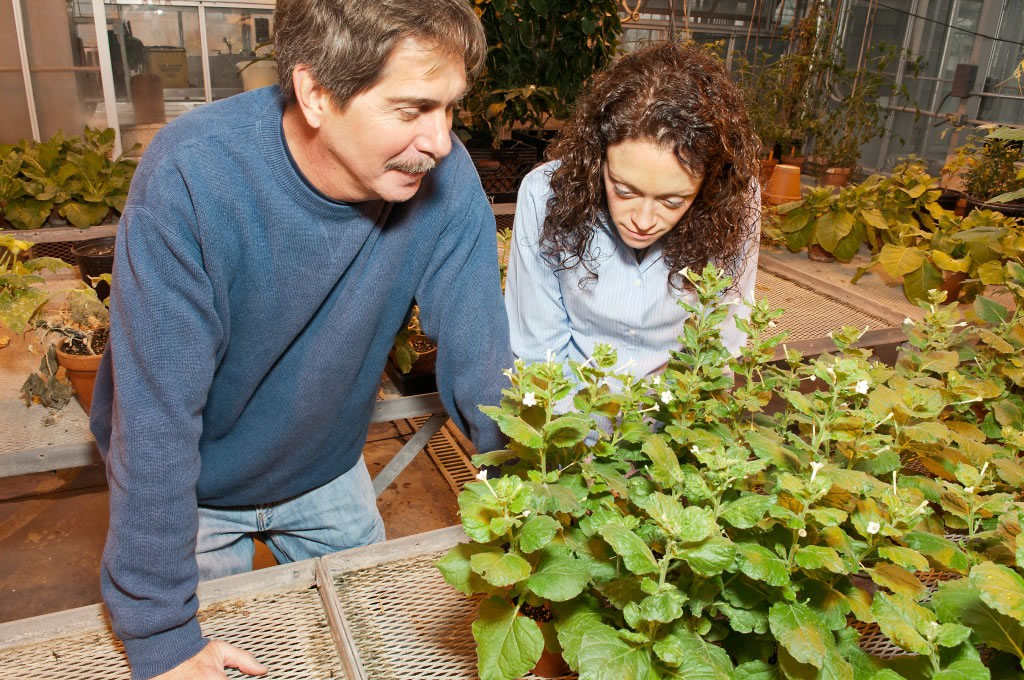Plant Pest Research Could Lead to Less Insecticide Use

Researchers at the U.S. Department of Agriculture have found a way to identify aphids that spread plant viruses. Big whoop, right? Actually, the discovery of biomarkers that differentiate between virus-spreading and virus-free aphids could lead to a significant decrease in insecticide use on everything from lettuce plants to apple trees. This means a safer, more sustainable and less chemically dependent food supply.
Aphids are tiny insects with plant-toxic saliva that prey on all species of cultivated crops. Some, not all, are carriers of contagious plant diseases that cause millions of dollars in damage to agricultural produce each year. By examining the types of proteins in their cells, Agricultural Research Service (ARS) scientists Michelle Cilia and Stewart Gray have found a way to distinguish between aphids that can inject plants with a virus and those that can't.
“By studying greenbug aphids in the laboratory,” writes Dennis O'Brien of the USDA, “they discovered that the lab-raised insects' ability to transmit yellow dwarf viruses was linked to the presence or absence of nine biomarker proteins found in the insect cells.”
“They then analyzed greenbug aphids collected from cereal crops and non-cultivated fields and found the aphids consistently transmitted yellow dwarf virus only when they carried most, if not all, of the nine proteins. Field samples were collected by ARS colleagues John Burd and Melissa Burrows at the agency's Wheat, Peanut and Other Field Crops Research Unit in Stillwater, Okla. The aphid does not need all nine proteins to spread the virus, but there are some that are essential.”
The findings are a milestone for the field of virology in general. This is the first time that protein biomarkers have been associated with an insect's ability to transmit viruses, say the scientists.
The ramifications of their research are far-reaching but before practical applications can come about, Cilia and Gray must first develop a test to identify potential disease vectors. Experts can then advise if the presence of particular types of aphids warrant the spraying of insecticides, an action that has been shown to reduce the incidence of some viruses. The pair of scientists also are involved in a larger collaborative effort to test for biomarker-predictor proteins in other insect species.
Their lab findings were reported in the Journal of Virology, while the field population study was published in the peer-reviewed Proteomics.



